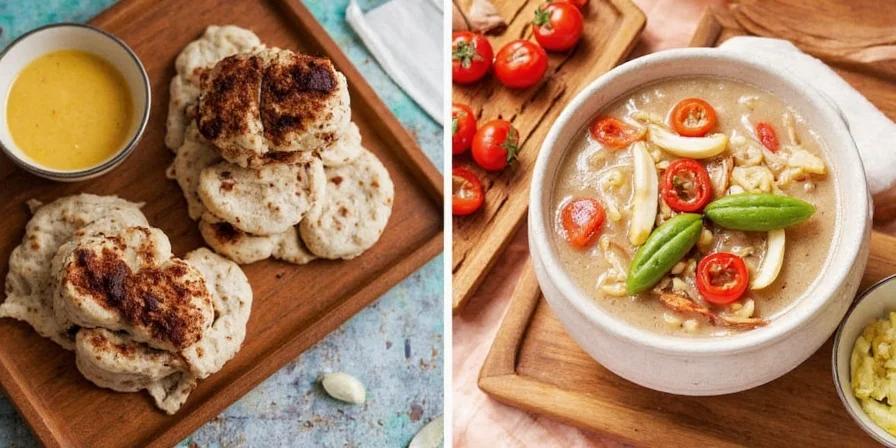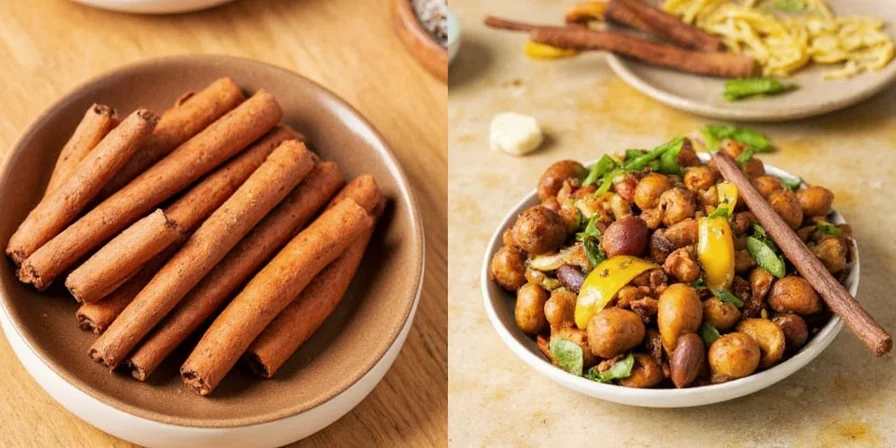Unlocking the Secret to Flavorful Cooking with Cinnamon

There’s something magical about cinnamon. That warm, sweet, and slightly spicy aroma that can transform a simple dish into a culinary masterpiece. But here’s the thing: not all cinnamon is created equal. If you’re serious about cooking, especially if you're a fan of both sweet and savory dishes, understanding the difference between Ceylon and Saigon cinnamon is essential. In this article, we’ll dive deep into the world of cinnamon, explore the nuances between these two varieties, and share some practical storage and usage hacks that will elevate your cooking to a whole new level.
The Cinnamon Dilemma: Ceylon vs. Saigon
When you walk into a spice shop or scan the aisles of your local grocery store, you’ll likely see two types of cinnamon: Ceylon and Saigon. But what exactly makes them different, and why should you care? Let’s break it down with a simple yet informative comparison table.
| Characteristic | Ceylon Cinnamon | Saigon Cinnamon |
|---|---|---|
| Origin | Sri Lanka | Vietnam |
| Scientific Name | Cinnamomum verum | Cinnamomum loureiroi |
| Appearance | Thin, light brown quills | Thick, dark brown quills |
| Flavor | Delicate, sweet, and woody | Strong, spicy, and slightly bitter |
| Usage | Sweet dishes, desserts, and beverages | Savory dishes, spice blends, and marinades |
| Coumarin Content | Low | High |
As you can see from the table, Ceylon cinnamon is the more delicate of the two, with a sweeter and more nuanced flavor profile. It’s often referred to as the “true cinnamon” and is prized in fine dining and dessert recipes. On the other hand, Saigon cinnamon has a more intense flavor and is commonly used in savory dishes and spice blends.
But here’s a little-known fact: Saigon cinnamon contains significantly more coumarin, a naturally occurring compound that can be harmful in large quantities. While the levels are generally safe for most people, it's something to be aware of, especially if you're using cinnamon in large amounts regularly.
Storage Hacks for Long-Lasting Cinnamon
Proper storage is the key to preserving the flavor and aroma of your cinnamon. Here are some expert tips to help you keep your cinnamon fresh for months, if not years.
1. Keep It in an Airtight Container
Exposure to air is one of the biggest enemies of spices. To keep your cinnamon from losing its potency, store it in an airtight container. Glass jars with tight-fitting lids are ideal, as they protect the spice from moisture and light.
2. Store in a Cool, Dark Place
Heat and light can cause spices to lose their flavor over time. The best place to store your cinnamon is in a cool, dark cupboard away from the stove or any heat source. Avoid storing it in the refrigerator unless you live in a very hot climate, as the moisture can cause it to clump and become less effective.
3. Use Opaque Containers
If you're using glass jars, make sure they are opaque or at least not transparent. Light exposure can degrade the essential oils in cinnamon, leading to a loss of aroma and flavor.
4. Avoid Moisture
Moisture is another big no-no when it comes to storing spices. Make sure your cinnamon is completely dry before storing it, and avoid any containers that are prone to condensation or humidity.
5. Use the Right Amount
It’s easy to overuse cinnamon, especially if you're trying to add a lot of flavor to a dish. A little goes a long way. Use a fine grater or a spice measuring spoon to ensure you're using the right amount each time.
Usage Hacks for Maximum Flavor
Now that your cinnamon is stored properly, it's time to think about how to use it effectively in your cooking. Here are some pro-level tips to help you unlock the full potential of Ceylon and Saigon cinnamon.
1. Toast It for Extra Flavor
Before adding cinnamon to a dish, try toasting it in a dry skillet over medium heat. This process enhances its natural oils and intensifies its flavor. Be careful not to burn it, as that can lead to a bitter taste.
2. Use Ceylon for Desserts and Beverages
Ceylon cinnamon is a perfect match for desserts like apple pie, cinnamon rolls, and rice pudding. It also works well in beverages such as chai, mulled wine, and spiced coffee. Its delicate flavor complements sweet ingredients without overpowering them.
3. Use Saigon for Savory Dishes
Saigon cinnamon is ideal for savory dishes like curries, stews, and spice rubs. Its bold flavor can stand up to strong ingredients like onions, garlic, and peppers. It's also a key ingredient in many Vietnamese and Middle Eastern spice blends.
4. Grate It Fresh
Pre-ground cinnamon can lose its potency quickly. If you're serious about flavor, invest in a good quality grater and grate your cinnamon fresh whenever you need it. This ensures that you're using the most aromatic and flavorful spice possible.
5. Experiment with Blends
Don’t be afraid to experiment with different spice blends. Try mixing Ceylon cinnamon with nutmeg, cloves, and cardamom for a warm, sweet spice blend that works well in both desserts and savory dishes. For a more intense flavor, combine Saigon cinnamon with cumin, coriander, and turmeric for a bold, savory blend.
Common Mistakes to Avoid
Even the best cooks can make mistakes when it comes to using and storing cinnamon. Here are a few common errors to watch out for:
- Using the wrong type of cinnamon: Ceylon and Saigon cinnamon are not interchangeable in all recipes. Using Saigon in a dessert that calls for Ceylon can result in an overly bitter or spicy flavor.
- Storing in the wrong container: Avoid using plastic containers or resealable bags, as they can allow moisture and air to seep in over time.
- Using too much cinnamon: A little goes a long way. Overusing cinnamon can make a dish taste artificial or overpowering.
- Storing in the refrigerator or freezer: Unless you live in an extremely hot climate, storing cinnamon in the fridge or freezer is unnecessary and can lead to clumping and loss of aroma.
By avoiding these common mistakes, you can ensure that your cinnamon remains fresh and flavorful for as long as possible.
Conclusion: Cinnamon – A Flavorful Journey
Cinnamon is more than just a spice; it's a flavor that can transform your cooking. Whether you're using Ceylon for its delicate sweetness or Saigon for its bold intensity, understanding the nuances of each variety can take your culinary skills to the next level. With the right storage and usage techniques, you can keep your cinnamon fresh for months and unlock new levels of flavor in your dishes.
So the next time you're in the kitchen, take a moment to appreciate the magic of cinnamon. It's not just an ingredient; it's a journey through flavor, history, and culture. And with these tips, you'll be well on your way to becoming a cinnamon connoisseur.

Happy cooking, and may your dishes be as warm and inviting as the spice of cinnamon itself.










 浙公网安备
33010002000092号
浙公网安备
33010002000092号 浙B2-20120091-4
浙B2-20120091-4